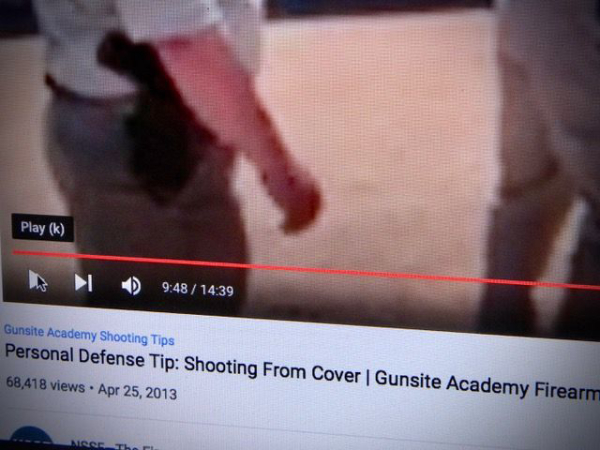While video can help introduce concepts and techniques, it shouldn’t be relied on as your only source of “learning.” Video is a great teaching tool, when used properly, but has too many limitations especially when examining the skills used for fighting with firearms.
Seeing or watching a demonstration of a skill is one mode to intake information – in addition to listening and actual participation – but it can’t stand alone. Video can show what’s occurring or being performed, and a little bit of the “how” but there’s no way it can cover all the nuances involved in something as simple as drawing or presenting the pistol from concealment. Real learning can only occur through a well-balanced presentation covering all three modes of intake, and feedback from someone who is well versed in the subject.

Video can cover common issues that may occur with the majority of its viewers. For example, removing your finger from the trigger and trigger guard while performing an empty reload. This is something that newer shooters must be reminded of constantly during training. Eventually they “learn” to do this on their own. This is a common issue. An individual may experience something unique, different from most. They clear the finger from the trigger guard at the start of the reload but, as when shifting the pistol in hand to press the magazine release the finger ends back up on the trigger. A video for the masses can’t possibly cover quirky problems like this.
There are also problems created for ourselves through improper technique that we’re not even consciously aware of occurring. It doesn’t take but a few repetitions before this “mistake” becomes a habit. Learning the proper technique has now become more difficult. It’s about ten times more difficult to “relearn” as opposed to learning the correct technique from the beginning.
Most videos at some point or another will have disclaimers of sorts to the effect that its purpose is for “informational” or “entertainment” purposes. It may be used as an “educational” tool. Usually there will be notes indicating that the video “is not intended to be a substitute for the proper training.” In other words – again, especially for the defensive use of firearms – you’re going to need assistance from someone who knows more than you.
True learning only occurs when there’s a direct relationship between student and teacher. The more experienced teacher is able to break everything down into blocks that are easily learned. These small blocks can be assembled into large groups used to accomplish the ultimate goal – the ability to apply the correct skills on demand, under stress and any type conditions. Along the way the teacher is able to apply the constructive corrections that specifically apply to the student.
This relationship, and all the exchanges that occur during the learning process cannot be reproduced through video alone. Video is a great teaching tool, used in conjunction with all other methods. It’s also beneficial for reviewing material, a refresher to tune-up existing skills. Just keep in mind, like with any learning tool or material you must always consider the source, which should directly reflect the fact that fighting with firearms is a serious matter, with lethal consequences.
Tiger McKee is director of Shootrite Firearms Academy. He is the author of The Book of Two Guns, AR-15 Skills and Drills, has a regular column in American Handgunner and makes some cool knives and custom revolvers. Visit Shootrite’s Facebook page for other details.